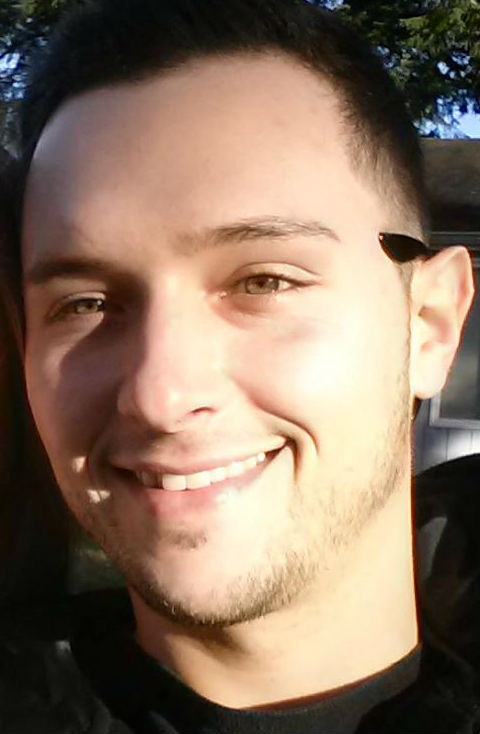
Recently released data show that fewer Americans are addicted to painkillers. But don’t be fooled into thinking America has a handle on its opiate addiction.
Research published Jan. 15 in the New England Journal of Medicine indicates that overdose deaths from prescription painkillers, as well as the percentage of people abusing opiate painkillers, dipped slightly from 2011 to 2013. The White House reported a 5 percent drop in painkiller overdose deaths in 2012 after years of increases.
It sounds like good news. And to some degree it is, addiction experts say. But the sobering truth is that while painkiller overdose cases are down, heroin overdoses are up. Still, in 2013 more than half of the 44,000 overdose deaths in America stemmed from prescription drugs, according to the U.S. Centers for Disease Control and Prevention (CDC). Of that number, more than 70 percent were the result of opioid painkillers.
In an interview with Healthline, Scott Dehorty of the Father Martin’s Ashley pain recovery program explained that painkillers are a slippery slope. “From being sober to being on heroin seems like a gigantic leap,” said Dehorty, the program’s clinical manager. “But from being on opiates for being in pain and being sick to using heroin is just a little step.”
The pressure is on the Food and Drug Administration (FDA) to do something about the painkiller epidemic, and some have suggested that efforts could include not approving future painkillers for sale in the United States unless they are “abuse-deterrent.” Could that really happen, and would it even make a difference?
Abuse-Deterrent Opioids Already on the Market and in the Pipeline
The FDA held a public meeting to discuss the need for abuse-deterrent opiate medications late last year. Abuse-deterrent means that a medication is formulated in such a way as to make it difficult, but not impossible, to abuse. For example, pills may be harder to crush to discourage snorting or injecting.
The FDA has already approved three formulations that claim to be abuse-deterrent, including OxyContin (extended release oxycodone), Embeda (extended release morphine/sequestered naltrexone), and Targiniq (extended release oxycodone with naloxone). Naloxone (brand names Evzio and Narcan) and naltrexone are called opioid antagonists. They essentially create a ceiling for how high a person can get while taking an opiate by blocking receptors in the brain. This helps prevent overdose.
Related News: FDA Approves Hand-held Injector for Opiate Overdoses »
A small company called Relmada Therapeutics has two new pain medications in the pipeline, calling one “abuse resistant” and the other “low abuse potential.” The FDA is encouraging other pharmaceuticals to do the same. It is considering regulations that would require the development of such formulations for all opiates on the market.

During the public hearing last year, Dr. Bernie Good of the Department of Veterans Affairs (VA) explained that the VA has already taken steps to reduce opioid abuse and dependence. As part of its opioid safety initiative, the number of veterans receiving opiate prescriptions declined by more than 50,000 from 2012 to the third quarter of 2014, from 679,376 to 628,969. This occurred even as the total number of veterans enrolled in the pharmacy program increased by 80,000.
Good said that while the VA supports the development of abuse-deterrent opioid formulations, converting to such formulations would be “quite costly to the VA.” He added that more research is needed before mandating only abuse-deterrent products for all pain patients.
Chronic pain patients also fear that mandating medications be resistant to abuse will make it more difficult for them to get the drugs they need. In a 2012 review of the drug options for chronic pain patients, researchers concluded that “abuse continues to cause uneasiness among clinicians when opioids are prescribed, and this may result in the prescription of inadequate doses for pain control.”
How Methadone Sent One Man Spiraling Over the Edge
Zachery Brader’s story is one that, unfortunately, is becoming more and more common. Like so many, he began drinking at a young age. When a BMX biking accident resulted in multiple surgeries on his leg, he learned all about how Vicodin can make a junior high school kid popular.
Heroin in the Suburbs: Learn More About the American Epidemic »
“I had no idea this was cool at all,” Brader told Healthline. “But then one day in class, a guy said, ‘You got a Vicodin? Can you get me one of those?'”
The next thing you know he was raiding medicine cabinets at parties classmates threw when their parents weren’t home.
Fast forward several years. Brader, now 30, has been sober for 18 months. But things got worse before they got better.

When Brader cut part of his thumb off in an accident at work, “I got as much Percocet as I wanted.” But when he went back to work after two months, his doctor cut him off. “I was like holy s–t, I do not feel good.”
He said that co-workers found him some good cocaine, but cocaine just wasn’t his thing. “One day the guy said he could get methadone. That day I took one 5 mg pill and was high the whole day, woke up the next morning still high and feeling great. I thought, ‘Wow, I have found out what life is all about,'” Brader said. Methadone is often prescribed to help people wean themselves off of other opiates.
He doesn’t believe that abuse-deterrent medications will make much of a difference in discouraging addicts from getting the drugs they want. He believes the problem with addiction lies with the approval of such powerful medications in the first place.
“I fought the [intervention] program for years,” Brader told Healthline. “I just thought I’d figure out a way to stay high and keep doctor shopping and doing what I was doing, to just stay high and keep life manageable.”
Addiction: A Disease of Isolation?
Brader finally found help at The Discovery House, located in Southern California’s San Fernando Valley. He said withdrawal from Methadone lasted five months.
Read More: Going through Methadone Withdrawal »
Dr. Walter Thomas of The Discovery House told Healthline that he firmly believes in the benefits of 12-step programs, which focus on fellowship and adopting tools for better living.
A newly released book generating lots of chatter makes the argument that addiction stems from bonding problems. In “Chasing the Scream: The First and Last Days of the War on Drugs,” author Johann Hari makes the case that addicts who can escape isolation and reconnect with the world can recover. He does so after 30,000 miles of travels and personal observations.
He writes about his new book in this Huffington Post column. Hari describes returning from his travels to see his ex-boyfriend trembling in withdrawal: “For a century now, we have been singing war songs about addicts. It occurred to me as I wiped his brow, we should have been singing love songs to them all along.”
Thomas said he believes that addiction is a genetic disease but that bonding is an important part of the treatment process. He said there are three types of people who abuse drugs. The first group includes those under stress. When the stress goes away, they stop using, he said.
The second group may have an underlying psychiatric disorder, such as bipolar disorder, and are trying to self-medicate. The third group doesn’t have any of these issues. They could be curious, bored, or just looking for a good time.
“It doesn’t matter why you start using. If you have the brain chemistry, and that’s the key, regardless of why you started using you’re going to end up with addiction,” Thomas said.
From Hard Worker to Hardcore Addict
Dehorty of Father Martin’s Ashley described one patient in his sixties who had done physical labor for most of his life and ended up having surgery to repair some general wear and tear. After surgery he was prescribed painkillers.
Related News: Fighting an ‘Epidemic’ of Painkiller Overdoses »
He found that when he was high on painkillers, work was much easier. A co-worker told him that all he was doing was taking heroin in a pill form, and that heroin was much cheaper. The next thing you know this average Joe was shooting up and hiding it from his wife and kids, Dehorty said.
This man turned out to be an excellent candidate for the program at Father Martin’s Ashley, Dehorty said. “He had a clean slate in that he was therapy and treatment naïve, he had never heard of acupuncture or yoga or anything, and he really was open to anything because he couldn’t believe where his life had gotten.”
Much like the 12-step program teaching participants better ways to live, the pain recovery program at Father Martin’s Ashley addresses common sense factors that could be contributing to a person’s pain. Sometimes it can be as simple as good nutrition.
“When the person gets better, the part [that hurts] gets better,” Dehorty said. “The problem with only treating the part is that you’re making the part bigger than the person.”
Addicts Likely to Outsmart Even Abuse-Deterrent Drugs
Dehorty and others interviewed for this story said that doctors are often too quick to prescribe painkillers. They explain that more education is needed on what to look for to make sure you’re not prescribing to an addict.
Related News: ACA Brings Substance Abuse and Mental Health Treatment to Millions »
Addiction experts interviewed for this piece also lauded state tracking systems that show who has received painkillers, from whom, and when. Such information has proven valuable to law enforcement and others. Dehorty suggests that a national monitoring system be established.
He and other addiction experts aren’t convinced that mandating abuse-deterrent painkillers would solve the problem of opiate addiction. Abusers still will find a way to abuse because “that’s part of the rush,” he said. “We work on this from 9 a.m. to 5 p.m. Monday through Friday. They work on this 24 hours a day, 365 days a year,” he said. “The fact is they are better at this than we are.”
Kent Runyon, executive director of the Novus Medical Detox Center, told Healthline that a person’s best defense against opiate addiction is their own knowledge. Anyone susceptible to addiction needs to avoid using opiates or any other addictive substance, even when a doctor prescribes it.
“In this country we have many people who are now trapped on methadone and don’t know how to get off of it,” he told Healthline. “We see business people who find it too difficult to get their prescription drug of choice choosing to begin using heroin, which is easy to get and less expensive. It is critical for persons in recovery to fear relapse and to question the risk of any substance that comes into their body, including medications prescribed by a physician.”

